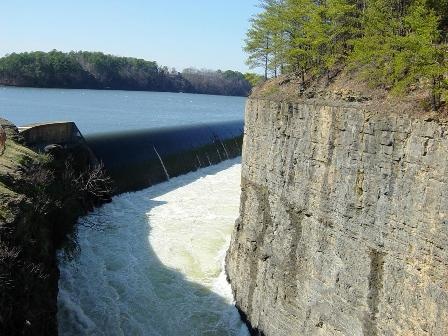Lake Tuscaloosa Fishing Spot
- Acreage: 5885
- Elevation: 224'
- Shoreline: 177'
- Last Modified By: vinny60 on 09/15/09 09:21 AM
- Ask about Lake Tuscaloosa in our Fishing Forums
Photos
Fish Species
Comments
-
Popular top water baits include jitter bugs and willow-leaf spinning lures, but many anglers prefer the traditional plastic worm or lizard to catch spotted bass off rocky walls or ledges found throughout the lake. Redear sunfish and other sunfish species are abundant and are often found along weed beds backwater sloughs and coves.
Lake Tuscaloosa Description
Located five miles north of the cities of Tuscaloosa and Northport in west central Alabama, Lake Tuscaloosa is a 5,885-acre water supply reservoir with 177-miles of shoreline. The tailwater area (North River) drains into the Black Warrior River basin and is a popular recreational area to many anglers. When the reservoir was impounded by the City of Tuscaloosa in 1971, little material was left behind to serve as fish habitat. Consequently, biologists suspected that the lake would be clear and infertile with relatively low fish production. This has proved to be the case, and water visibilities near the dam often exceed 20-feet. Upper reaches of the lake near Binion and Turkey Creeks are more fertile, have lower water visibilities, and are generally better areas to fish. The lake has become very popular for various types of recreation including boating, skiing, swimming and fishing. The lake has become very urbanized. There are public and private boat launch ramps located on the lake as well as several private marinas. Public launches are located at Binion Creek (State), Rock Quarry and Sharps Landing (Municipal). Detailed maps of Lake Tuscaloosa are available at local marinas and sporting goods stores. The most common sportfish found in Lake Tuscaloosa include the Alabama spotted bass, largemouth bass, bluegill, redear sunfish, and white crappie. Popular non-game fish include blue catfish, channel catfish, freshwater drum, buffalo and carp. Forage species commonly found in the lake include gizzard and threadfin shad and various minnows and shiners.
